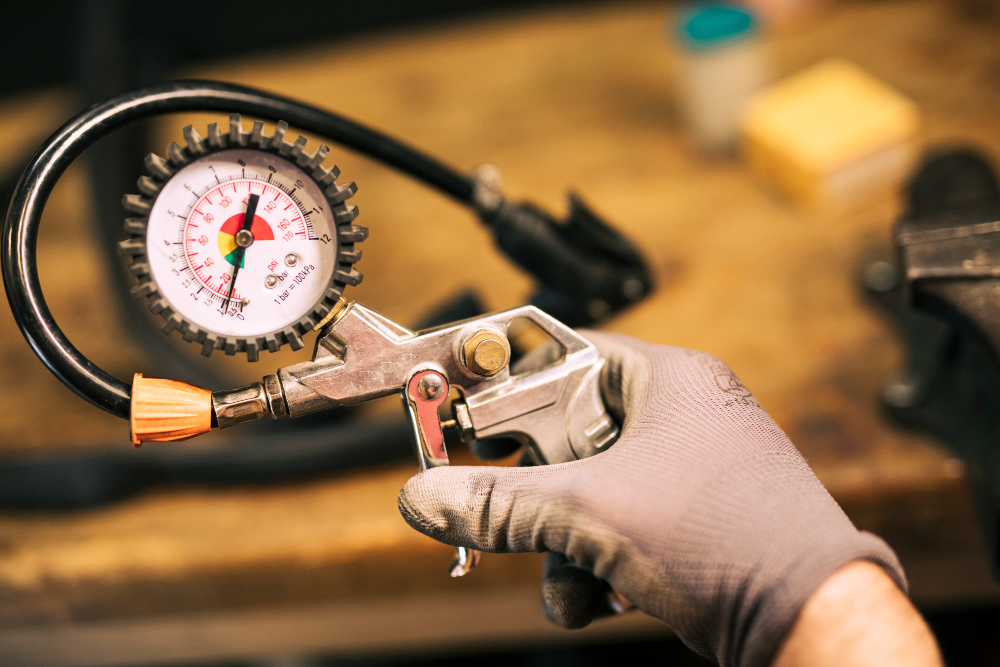
What Are Pneumatic Tools Powered By
At the core of pneumatic tools’ force lies the humble air compressor, the unsung hero that provides the lifeblood of compressed air. These machines are responsible for compressing atmospheric air, increasing its pressure, and delivering it to pneumatic tools via hoses. Air compressors come in various sizes and designs, from portable models for light-duty tasks to industrial-grade behemoths capable of powering multiple tools simultaneously. Whether it’s a small workshop or a large construction site, the air compressor serves as the beating heart of pneumatic power, driving productivity and efficiency with its steady stream of compressed air.
The Driving Force Behind Pneumatic Tools
Compressed air is the driving force behind pneumatic tools, propelling them to perform a wide range of tasks with precision and power. When released from the air compressor, compressed air flows through hoses and into pneumatic tools, where it’s converted into mechanical energy to drive the tool’s operation. The pressure of the compressed air determines the force and speed at which the tool operates, making it a versatile and adaptable power source for various applications. From drilling and fastening to cutting and sanding, pneumatic tools harness the energy of compressed air to get the job done efficiently.
Converting Air Pressure into Mechanical Energy
Pneumatic tools feature specialized motors designed to convert the energy of compressed air into mechanical motion. These motors come in different configurations depending on the type of tool and its intended application. For example, pneumatic drills and impact wrenches often use rotary vane motors, while pneumatic hammers and chisels utilize reciprocating piston motors. Regardless of the design, pneumatic motors operate on the principle of air pressure acting on pistons or vanes, causing them to move and drive the tool’s operation. The result is a reliable and powerful source of mechanical energy that can tackle a wide range of tasks with ease.
Controlling the Flow of Compressed Air
Pneumatic tools rely on specialized valves to control the flow of compressed air and regulate the tool’s operation. These valves serve as the gateway between the air compressor and the pneumatic motor, directing the flow of air to activate or deactivate the tool as needed. By opening and closing in response to changes in air pressure, pneumatic valves ensure precise and efficient operation of pneumatic tools, allowing users to control the speed, force, and direction of the tool’s motion. Whether it’s a simple on/off valve or a complex proportional valve, pneumatic valves play a critical role in optimizing the performance of pneumatic tools.
Connecting the Dots in Pneumatic Power
Air hoses are the lifelines that connect pneumatic tools to the air compressor, delivering a steady supply of compressed air to power their operation. These hoses come in various lengths, diameters, and materials to suit different applications and environments. Flexible and durable, air hoses are designed to withstand high pressure and provide reliable connectivity between the air compressor and pneumatic tools. Proper maintenance and care of air hoses are essential to prevent leaks, kinks, and other issues that can compromise the performance of pneumatic tools and hinder productivity.
Enhancing Performance and Versatility
In addition to the core components of air compressors, compressed air, pneumatic motors, valves, and hoses, pneumatic tools often feature a variety of accessories that enhance their performance and versatility. These accessories may include interchangeable tool heads, adjustable handles, ergonomic grips, and specialized attachments designed for specific tasks. By customizing their pneumatic tools with the right accessories, users can optimize their efficiency, accuracy, and comfort, making them indispensable assets in various industries and applications.
Pushing the Boundaries of Pneumatic Power
As technology continues to evolve, so too will the capabilities of pneumatic tools and the systems that power them. Innovations in air compressor design, pneumatic motor technology, valve systems, and materials science promise to push the boundaries of pneumatic power, making tools lighter, more efficient, and more versatile than ever before. From advanced pneumatic actuators and intelligent control systems to lightweight composite materials and energy-efficient compressors, the future of pneumatic power holds exciting possibilities for enhancing productivity and performance across industries.
The Airborne Arsenal of Pneumatic Power
Pneumatic tools are powered by the dynamic duo of air compressors and compressed air, with specialized motors, valves, hoses, and accessories completing the ensemble. Together, these components form an airborne arsenal of pneumatic power, capable of tackling a wide range of tasks with precision, efficiency, and reliability. As technology advances and innovation drives progress, the future of pneumatic tools shines bright with promise, offering endless possibilities for enhancing productivity, safety, and sustainability in the workplace.


